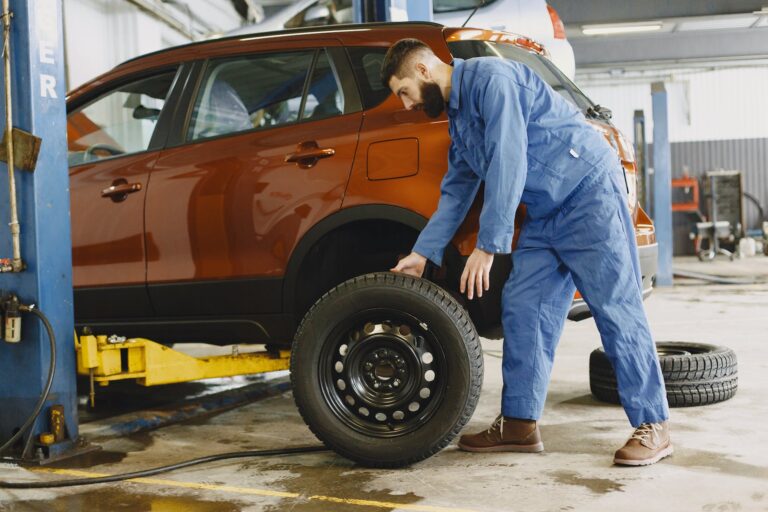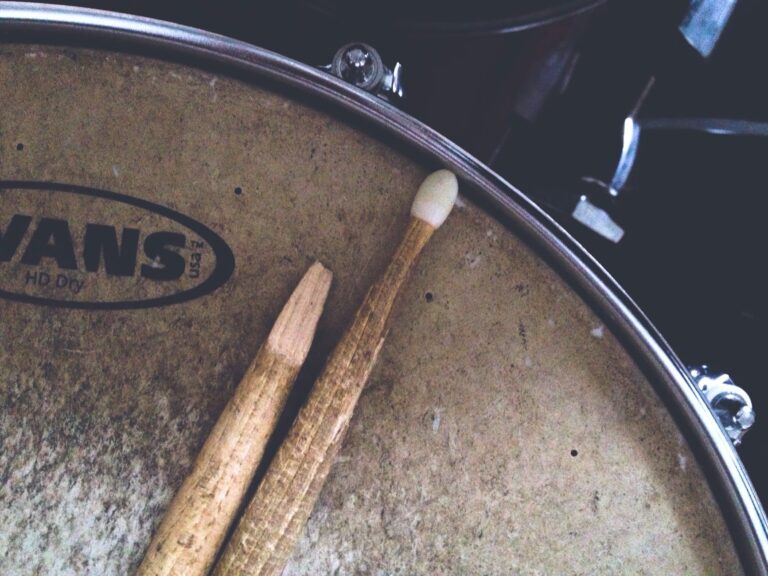Understanding Brake Shoe Replacement
When it comes to maintaining your vehicle’s braking system, understanding brake shoe replacement is crucial. Brake shoes are an integral component of drum brakes, which are typically found on the rear axle of modern cars and light trucks (Bridgestone Tire). Unlike disc brakes, drum brakes utilize friction material affixed to half-moon shaped “shoes” that press against the inside of a drum when the brakes are engaged.
What are Brake Shoes?
Brake shoes are curved metal plates that are lined with friction material. When you apply the brakes, hydraulic pressure forces the brake shoes against the inner surface of the brake drum, creating the necessary friction to slow down or stop your vehicle. The friction material on the brake shoes gradually wears down over time due to the heat and pressure generated during braking. As the friction material becomes thinner, it becomes less effective at providing the necessary stopping power, requiring brake shoe replacement.
Signs You Need Brake Shoe Replacement
Knowing the signs that indicate the need for brake shoe replacement is essential for maintaining your vehicle’s safety. Here are some common signs that may indicate it’s time to replace your brake shoes:
-
Visual Inspection: Performing a visual inspection of your brake shoes can help determine if they are worn and in need of replacement. Look for signs of excessive wear, such as thinning or uneven wear patterns (Performance Honda Store).
-
Vibrations or Pulsations: If you feel vibrations or pulsations in the brake pedal when applying the brakes, it may be a sign that the brake shoes are worn and need to be replaced. This can occur when the brake shoes have become unevenly worn or are not making proper contact with the brake drum (Performance Honda Store).
-
Reduced Braking Power: If you notice that your vehicle’s braking power has diminished, or if it takes longer to come to a complete stop, it may indicate that it’s time to replace the brake shoes. Worn brake shoes can result in a longer stopping distance, compromising your safety on the road (Performance Honda Store).
-
Squeaking or Squealing Noises: Unusual noises, such as squeaking or squealing, when applying the brakes can be an indication that the brake shoes are worn and need to be replaced. This noise is often caused by the wear indicator on the brake shoes, which is designed to make noise when the friction material becomes too thin (Performance Honda Store).
It’s important to note that the lifespan of brake shoes can vary depending on various factors, such as driving conditions, vehicle weight, brake system design, and driving style. On average, brake shoes last between 30,000 and 70,000 kilometers before they need to be replaced (Natrad).
If you notice any of these signs or suspect that your brake shoes may be due for replacement, it’s crucial to have them inspected and replaced by a qualified brake service professional. Proper maintenance and timely brake shoe replacement will help ensure the safety and performance of your vehicle’s braking system. For more information on brake services, check out our article on brake service near me.
The Cost of Brake Shoe Replacement
When it comes to brake shoe replacement, the cost can vary depending on several factors. Understanding the average cost and the factors that affect the overall price can help you budget for this essential brake service.
Average Cost of Brake Shoe Replacement
The average cost of brake shoe replacement ranges from $150 to $300, depending on the make and model of the vehicle (The Drive). Keep in mind that this cost may vary based on your location and the specific repair shop you choose. It’s always a good idea to get multiple quotes from different service providers to ensure you’re getting the best price.
Factors Affecting the Cost
Several factors can influence the cost of brake shoe replacement. Understanding these factors can help you better understand why the price may vary between different vehicles and service providers. Here are the key factors that can affect the cost:
-
Vehicle Make and Model: The type of vehicle you own plays a significant role in determining the cost of brake shoe replacement. Luxury and high-performance vehicles often require specialized parts, which can increase the overall cost of the service. Additionally, some vehicles may have more complex brake systems that require additional labor.
-
Brake Shoe Material: Brake shoes are available in a variety of materials, including organic, semi-metallic, and ceramic. Each material has its own advantages and price point. While organic brake shoes tend to be more affordable, ceramic brake shoes are often more expensive due to their superior performance and longer lifespan.
-
Labor Costs: Labor costs can vary depending on the brake repair shop you choose. Factors such as location, shop expertise, and overhead expenses can influence how much a shop charges for their services. It’s always a good idea to inquire about labor costs upfront when obtaining quotes for brake shoe replacement.
-
Additional Repairs: During the brake shoe replacement process, the mechanic may identify additional issues that require attention, such as worn brake drums or damaged brake hardware. These additional repairs can increase the overall cost of the service. It’s important to discuss any potential additional repairs with the mechanic before proceeding.
-
Warranty and Quality: The quality of the brake shoes being used and the warranty provided by the service provider can also impact the cost. Higher-quality brake shoes may come with a higher price tag but can offer better performance and longevity. Additionally, some repair shops may offer warranties on their parts and labor, which can add value but may also affect the overall cost.
It’s important to remember that brake shoe replacement is a crucial maintenance task that ensures the safety and performance of your vehicle’s braking system. While the cost may vary, it’s always recommended to prioritize quality and safety when choosing a brake repair shop. Researching reputable shops, reading customer reviews, and comparing quotes can help you find the best value for your brake shoe replacement needs.
Choosing a Brake Shoe Replacement Service
When it comes to brake shoe replacement, selecting a reliable and professional service is essential. One notable option is NuBrakes, which offers hassle-free brake shoe replacement services.
NuBrakes: Hassle-Free Brake Shoe Replacement
NuBrakes stands out in the industry by providing a convenient and customer-centric approach to brake services. What sets them apart is their unique business model – instead of requiring customers to visit a repair shop, NuBrakes sends their experienced brake technicians directly to the customer’s location. This saves car owners time and effort, eliminating the need for them to travel to a physical shop.
To ensure transparency and convenience, NuBrakes also offers upfront, no-obligation brake repair quotes. This allows customers to have a clear understanding of the cost before committing to the service. By providing this transparency, NuBrakes aims to build trust and establish a hassle-free experience for their customers.
Benefits of NuBrakes’ Service
There are several benefits to choosing NuBrakes for your brake shoe replacement needs. These include:
-
Convenience: NuBrakes’ mobile service eliminates the need for customers to travel to a repair shop. The brake technicians come to you, whether you’re at home, work, or any other location.
-
Expertise: NuBrakes’ brake technicians have decades of combined experience in brake shoe replacement. Their expertise ensures that your brake shoes are replaced with precision and care.
-
Transparent Pricing: NuBrakes provides upfront, no-obligation quotes, giving customers a transparent view of their vehicle’s repair costs. This allows car owners to make informed decisions and budget accordingly.
-
Easy Scheduling: Scheduling a brake shoe replacement service with NuBrakes is a breeze. Customers can request a free repair quote online, select a service date that works for them, and have a NuBrakes mechanic arrive on-site to replace the brake shoes.
Customer Reviews and Ratings
NuBrakes has garnered positive feedback from their customers, with a rating of 4.94 out of 5 based on 14,270 reviews. This high rating is a testament to the quality of their brake shoe replacement service and the satisfaction of their customers.
By choosing NuBrakes for your brake shoe replacement needs, you can benefit from their hassle-free approach, experienced brake technicians, transparent pricing, and outstanding customer satisfaction. To learn more about brake services and other related topics, visit our articles on brake services, brake repair, and brake replacement.
The Process of Brake Shoe Replacement
When it comes to brake shoe replacement, there are several important steps involved to ensure the proper functioning of your vehicle’s braking system. In this section, we will outline the key steps of the brake shoe replacement process, including inspection and assessment, removal of old brake shoes, installation of new brake shoes, and proper adjustment and testing.
Inspection and Assessment
Before starting the brake shoe replacement process, it is crucial to perform a thorough inspection and assessment of the braking system. This includes visually inspecting the brake shoes, brake drums, and other components to check for any signs of wear, damage, or brake shoe contamination. It’s also important to inspect the wheel cylinders and springs to ensure they are in good condition (WikiHow). If any components are found to be worn or damaged, they should be replaced to maintain optimal brake performance.
Removal of Old Brake Shoes
To access and replace the brake shoes, the rear brake drum needs to be removed. This can typically be done by removing the wheel and tire, followed by the brake drum itself (WikiHow). Once the brake drum is removed, the brake shoe assembly will be visible.
The next step is to carefully disassemble the brake shoe assembly. This involves removing any retaining clips, pins, or springs that secure the brake shoes in place. It is important to keep track of the order and orientation of the components as they are removed for proper reassembly later on.
Installation of New Brake Shoes
After the old brake shoes have been removed, it’s time to install the new brake shoes. The new brake shoes should be of the appropriate size and type for your vehicle’s braking system. It’s important to refer to the vehicle’s owner’s manual or a repair guide for specific instructions regarding the installation of the brake shoes.
During the installation process, it is crucial to clean the brake drum and the brake shoe components thoroughly. This helps to remove any dirt, debris, or brake shoe contamination that may affect the performance of the new brake shoes. Once cleaned, the new brake shoes can be properly aligned and reassembled on the brake shoe assembly.
Proper Adjustment and Testing
After the new brake shoes are installed, it is essential to properly adjust them to ensure optimal brake function. Proper adjustment involves setting the brake shoes at the correct distance from the brake drum to achieve the desired braking performance. This can be done by adjusting the brake shoe adjuster mechanism or using other adjustment methods recommended for your specific vehicle.
Once the brake shoes are properly adjusted, it is important to conduct a thorough brake system test. This includes testing the brake pedal feel, checking for any unusual noises or vibrations, and ensuring that the vehicle comes to a complete and controlled stop. If any issues are detected during the testing phase, further adjustments or repairs may be necessary.
By following these steps, you can ensure a proper brake shoe replacement process. It’s important to note that specific procedures may vary depending on the make and model of your vehicle, so consulting the vehicle’s owner’s manual or seeking professional assistance is recommended. For more information on brake services and maintenance, visit our article on brake services.







